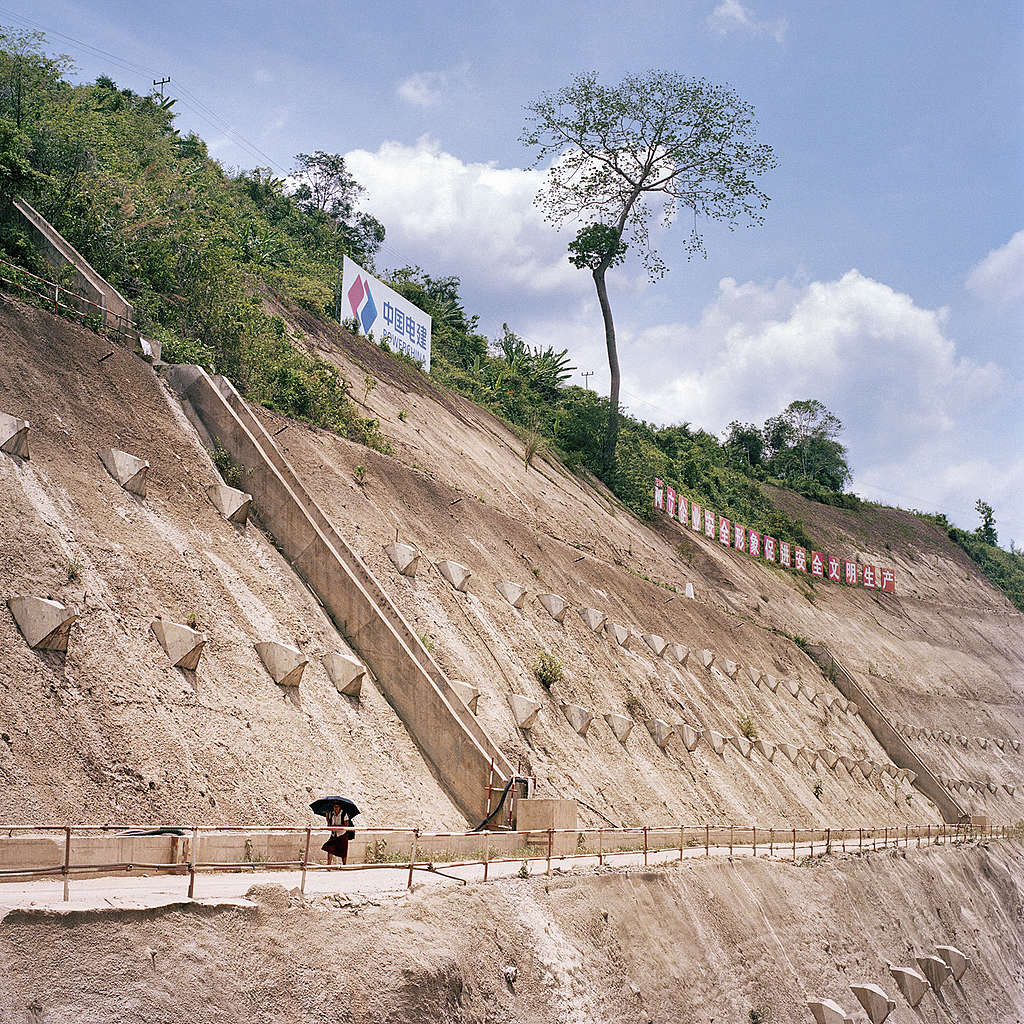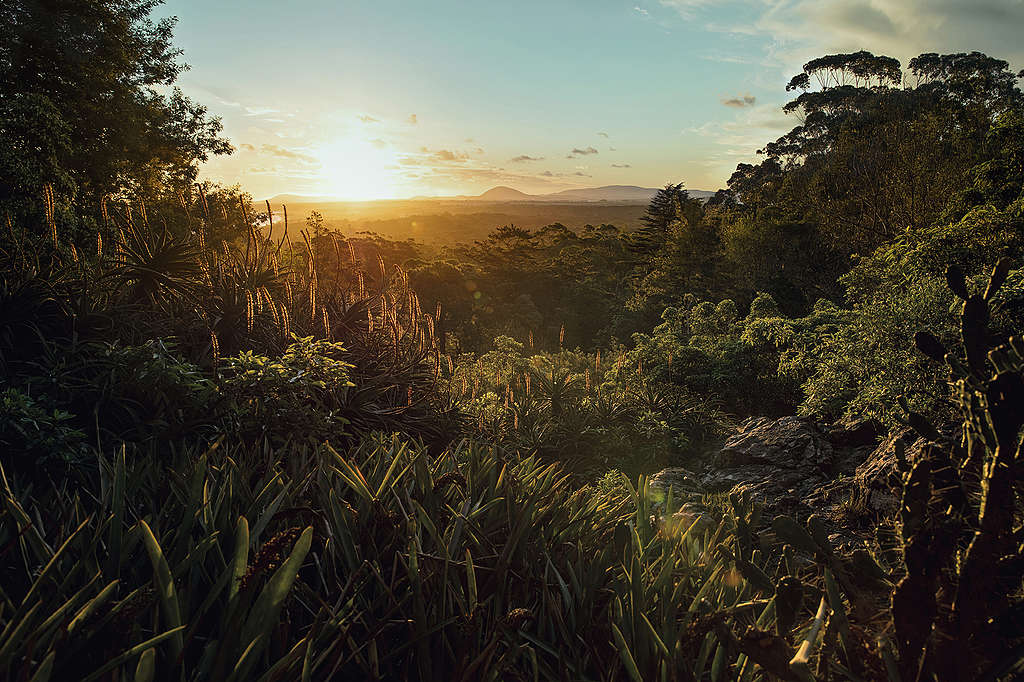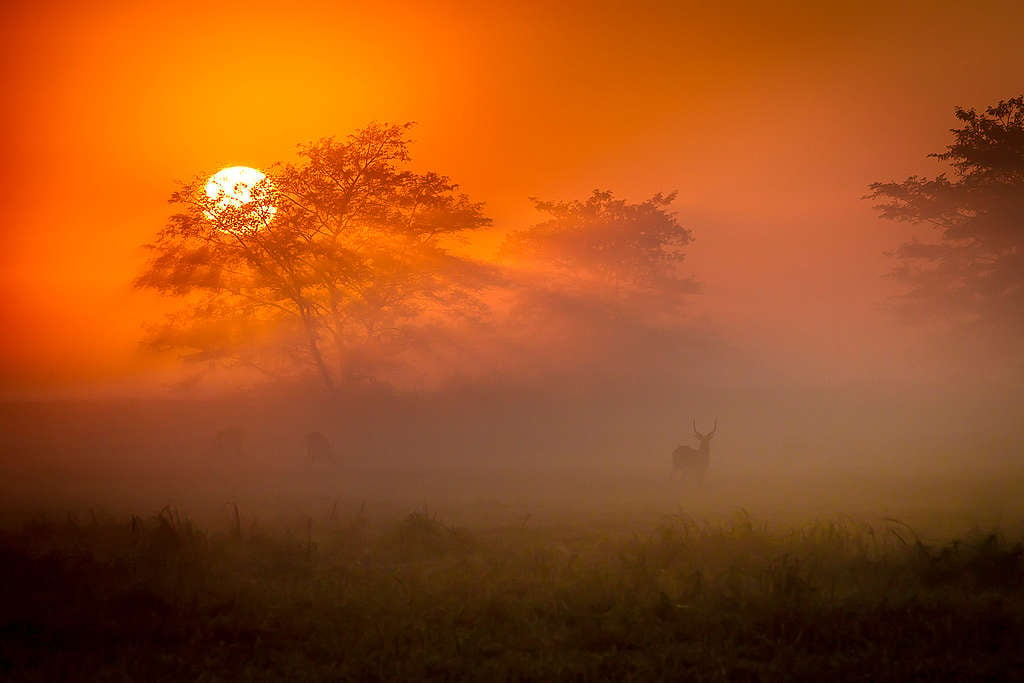To celebrate International Women’s Day, Greenpeace puts the spotlight on female visual storytellers from around the world and their work on nature and the environment. From documenting rivers to climate change and ruminations about sustainable landscapes, these women all share a common passion in bringing their voice to environmental stories that they care about.
Ore Huiying, Singapore
www.orehuiying.com
Independent photographer, Ore Huiying, believes in the power of storytelling, choosing to tell stories that she feels emotionally connected to and that are important. Based on her personal experience of being uprooted as a child, she says she finds herself drawn to narratives of people and places affected by development. “Their stories resonate with me,” she says.
As a National Geographic Explorer, Ore has done commissioned work for New York Times, Washington Post and Getty Images, but she is best known for her long-term project on the Mekong River. Since 2014, Ore has been documenting the Mekong and the communities dependent on it for their food security and livelihood.”The dams are changing the villagers’ lifestyle and socialization patterns. I am driven by the need to tell the stories of the affected communities. I feel it is important to add that dimension of reality to scientific research. And their stories need to be heard,” says Ore.
“With environmental issues, you often read a lot of information in the form of data and statistics, which a lot of people cannot relate to. But if you show them images of an orangutan being rescued from a burning forest or a bird covered in oil spills, I think that’s when reality hits home.”
Tali Kimelman, Uruguay
talikimelman.com
Self-taught commercial photographer, Tali Kimelman, focuses her personal work on the natural world. Her project Baño de Bosque is about the practice of Forest Bathing or Shinrin-yoku in Japanese, which is about immersing oneself in the forest while being fully aware of all senses. It was shot in Arboretum Lussich, a lush but little known arboretum in Uruguay with more than 400 species of trees from all over the world.
“With my project, I wanted to let people know about this wonderful path to feeling better that is accessible to all and also to let people know about the existence of the wonderful place where the project was shot,” says Kimelman. As part of the project, she organised collective Forest Bathings at the arboretum for up to 400 people.
“If we give ourselves the opportunity to observe the landscape deeply, we open up to the possibility of ceasing to look at it as something external and realising that we are a part of it. In this way we can have more respect and care for the land that sustains us,” says Kimelman, who is currently working on a new project shooting minimalistic landscape images in Uruguay.
Morgan Trimble, USA/South Africa
morgantrimble.com
American writer and photographer, Morgan Trimble, started her environmental work as a research scientist in conversation biology before discovering the power of photography to tell and share stories that she cares about. “Through photography, I try to share wildlife and conservation stories to a wide audience and inspire people to get involved, to love nature, and to rally against idly letting species slip into extinction,” she says.
Based in South Africa, she focuses mostly on the continent and covers a variety of themes from urban biodiversity in Cape Town to conservation initiatives in protected areas across the continent to how tourism helps fund a future for wildlife. Being an Emerging Fellow of the International League of Conservation Photographers, her photographs have been published in the New York Times, Washington Post, Telegraph, BBC Wildlife, National Geographic News and more.
“I’m passionate about wilderness and biodiversity and helping people feel more connected to the natural world. As a photographer and writer, I’m interested in some of the lesser told stories. Charismatic megafauna like rhinos and elephants get attention for a reason, but the small things matter too,” she says. “I think visual environmental stories help nature find a home in people’s hearts and understand that biodiversity matters.”
Arati Kumar-Rao, India
www.aratikumarrao.com
Based in Bangalore, India, Arati Kumar-Rao is an environmental photographer, writer and artist. Her work focuses on documenting South Asia’s changing landscapes and climate, and its effect on livelihoods and biodiversity. As a National Geographic Explorer, her work has appeared in NationalGeographic.org, The Guardian, The Hindu and more.
One of her landmark projects is the River Diaries, an in-depth investigation of the ecosystems and communities around rivers, primarily the Brahmaputra. “This river has always held a fascination for me — it is wild, untamed, and breathtakingly beautiful, traversing three countries and numerous ecosystems,” she says, adding that with the government’s plans to dam several tributaries, there is an added sense of urgency to document the river and the lives that depend on it.
“Ways of life are at stake, whole ecosystems are at stake. These things, once lost, cannot be recovered easily or, in some cases, recovered at all. We have to be vigilant, vocal, and educated about our rights, the rights of our fellow citizens, and what is in danger of being lost. Yes, it is challenging, but not telling these stories is not an option. Not if I want to be comfortable with what I see in the mirror.”
Khadija M. Farah, Kenya
www.kmfarah.com
Khadija Farah was working as a social worker in a refugee complex in Dadaab when she started photographing, focusing on the daily lives of the refugees. Soon after, she turned to photography as a full-time career, focusing on environmental and social issues.
She says that her love for the natural world was nurtured by her father, while also citing Kenyan activist Wangari Maathai as a role model. As a citizen of Africa, she feels that she has a responsibility to tell the many stories of the issues affecting her country and its people.
“So often, when people tell African stories, they either belong in the “Africa rising” or “Africa falling” narratives. Although both are valid, it is often very limiting,” she says, adding that she is interested in telling the stories of the everyday. One of her projects is on the women seaweed farmers in Zanzibar, where she documented the effects of climate change on the livelihood of these women.
“Photographers have the ability to both raise awareness and incite change. It is a medium that transcends cultural barriers and language. For environmental issues, powerful photography cuts through complex numbers and words and make them more accessible and digestible for people. I 100% believe it can make a difference.”
Maki Hayashida, Japan
www.makihayashida.com
Maki Hayashida’s interest to live a happier life lies in her belief that it can only be achieved through the right relationship between humans and nature. In her project, Japan-Go-Round and Almost Transparent Island, she explores the Japanese concepts of Satoyama (landscapes) and Satoumi (seascapes) for sustainable human-influenced natural environments. In these landscapes, the environment shows minimal human presence. “They are neither untouched nor touched too much,” says Hayashida.
Almost Transparent Island is a post-documentation on Teshima and the illegal dumping scandal in the Nineties. After a public outcry, the government removed the toxic materials and rebuild the island as one of the Island of Arts on the Seto Sea. For Hayashida, it was a remarkable transformation, which led her to impose sourced photographs of the old landscape with new ones that she had shot.
For her latest project, Hayashida returns to the archives to work on a series on Koto Ward, a major site for waste management in Tokyo since 1655 and its ‘war on garbage’. To complement the work, she is photographing its current residents wearing clothes that are about to be disposed of in her take on consumption and recycling.
Eva Verbeeck, Belgium
evaverbeeck.com
Belgium-born Eva Verbeeck uses photography to highlight issues that she strongly believes in. “I have always felt a responsibility as a photographer to tell a story that has a sense of urgency,” she says.
After studying human rights and international law in Brussels, she travelled to Ethiopia and Kenya to document the growing climate crisis in eastern Africa. For the past three years, she has worked on the project Looking for Water, living with different tribes to photograph the impact of climate change on their daily lives.
“The world’s climate is changing at exponential rates unseen at any time in human history. It is arguably the greatest threat to global stability that we have ever seen,” says Verbeeck, who encountered poverty, hunger and tribes forced out of their ancient lands because of extreme heat and prolonged periods of drought.
Back in the United States, where she is currently based, Verbeeck has worked on environmental stories about the young farmer movement in the country and how farmers are handling water scarcity in the Arid Western parts. She is currently working on a long term documentary project featuring young women in the United States, and will return to Ethiopia to continue working on Looking For Water.
Sarah Grohnert, Germany/New Zealand
sarahgrohnert.com
German-born filmmaker, Sarah Grohnert, first came to New Zealand as a 16-year-old exchange student with her dad’s Hi8 home video camera. She discovered her love for the medium while she was there, moving back to New Zealand in 2011.
With her debut directorial film, Ever the Land, she explores with an impartial eye the bond between the Ngāi Tūhoe, an independent Maori tribe, and their land through a momentous architectural project which coincided with the Tūhoe’s historic settlement with the New Zealand government. As a Living Building, the first in New Zealand, the construction of the community centre used radically sustainable methods and materials.
“Tūhoe embody their land, and their land embodies them. The film takes a close look at this and explores how this relationship is manifested in their building,” says Grohnert.”At the end of the day, to me, storytelling is about fostering empathy. The storyteller asks you to see and feel life from the perspective of fellow human being and how it is that they relate to their environment. In the case of Ever The Land it is very specific to their natural environment, their homelands.”
Priya Thuvassery, India
The Coral Woman trailer: vimeo.com/308842567
Priya Thuvassery was working as a producer for NDTV when she received a call from Uma Mani. The artist pitched the idea of doing a documentary on the little-known coral reefs in India. She herself was a painter who learnt how to swim and dive at the age of 52 so she can see with her own eyes the corals she’s been painting.
Thuvassery was intrigued but it wasn’t until she went freelance that she embarked on the story as her debut directorial film. Coral Woman is her journey with Uma Mani to explore the underwater world and the threat to the coral reefs of the Gulf of Mannar.
“I have always been fascinated by stories about women and also working with women but I never thought that I would be an environmental activist. With Coral Woman, I feel that it’s an important film that should be shared as widely as possible,” says Thuvassery. Besides the festival circuit, the documentary has been screened in various locations around India every month since it was launched.
Thuvassery is currently working on a new film on the effect of climate change and water in North India. “It is looking at climate change from a gender perspective and how these issues affect women especially.”

Teresa Camou Guerrero, Mexico
sunudoc.com
Teresa Camou Guerrero spent 25 years of her life as a puppeteer before turning to filmmaking. Sunu, her debut documentary feature is about Mexican corn farmers who are determined to uphold traditional farming methods and also to keep native seeds alive.
“It should be all our concern, not just the farmers. We don’t know where our food comes from anymore. We have no relationship with the producers of our food. We need to wake up and be conscious in our decision in what we eat,” says Camou.
In Mexico, corn is not just food. It is a way of being, an identity embodied by the indigenous people and by the farming communities of Mexico. “We are the centre and origin of corn. Corn is everything to us,” she explained.
At the core of Guerrero’s work, whether it is puppeteering or filmmaking, is the opportunity to tell stories. “I like to tell stories that you seldom hear about,” she says. “I like to give a voice to the people whose voices are not heard.
Author Tan Lee Kuen is a freelance writer currently living in Cambodia. You can follow her blog www.asiapapercamera.com to know more about her













